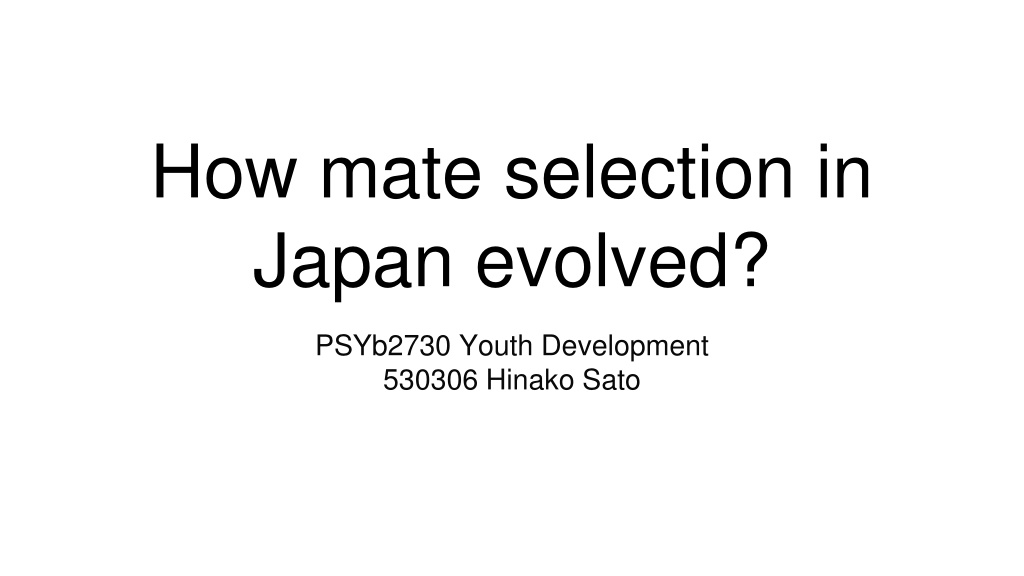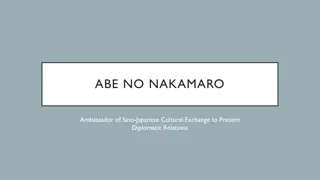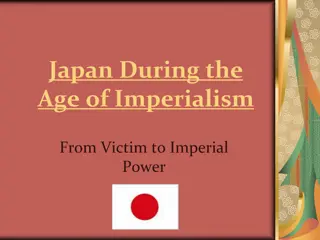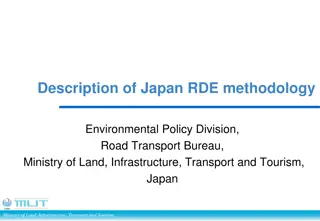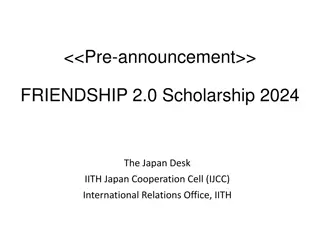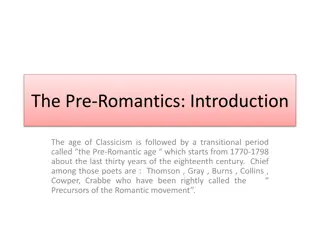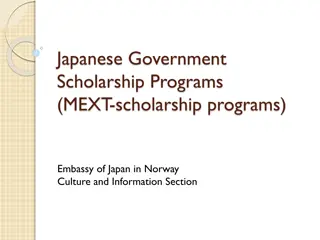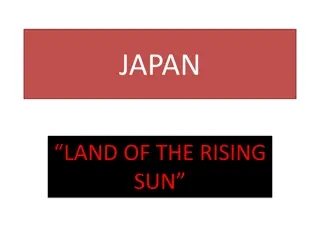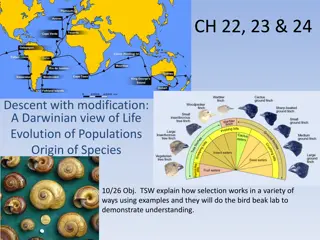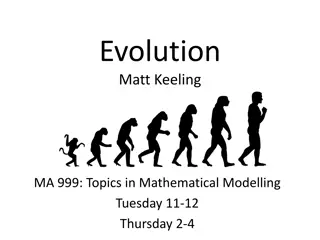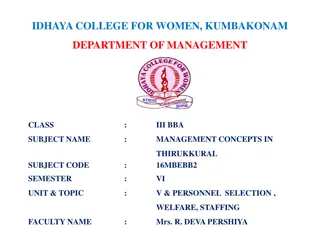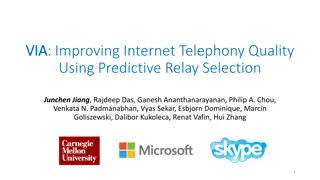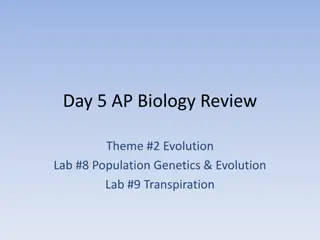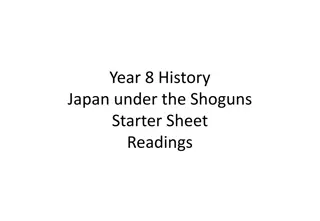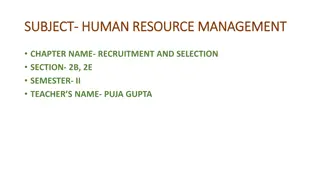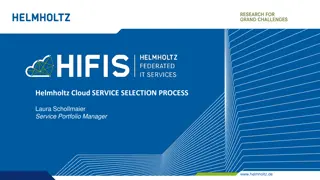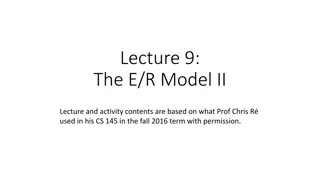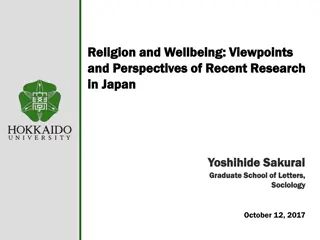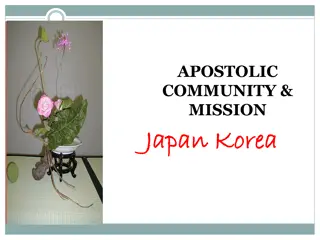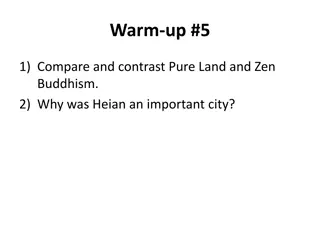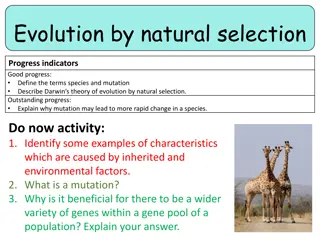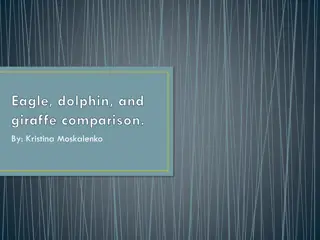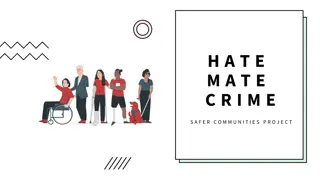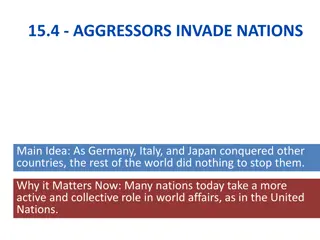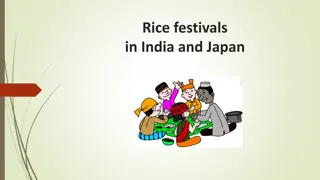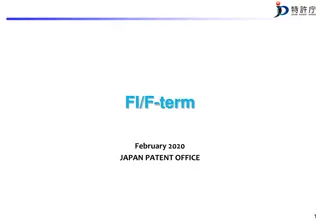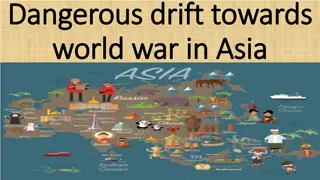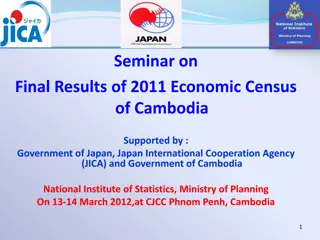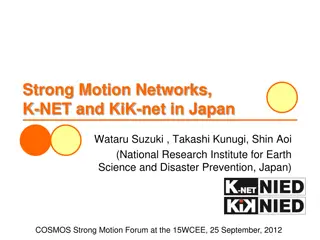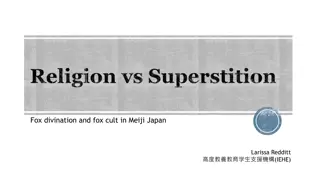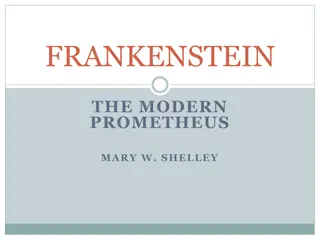Evolution of Mate Selection in Japan: Insights into Romantic Relationships
Romantic relationships in Japan have undergone a transformation from arranged marriages to a shift towards love matches. The selection process for males reflects cultural and economic backgrounds, with dating apps playing a significant role in modern mate selection. The dynamics of romantic relationships emphasize intimacy, commitment, and passion, influencing the way young Japanese adults perceive personal identity and connections.
Uploaded on Sep 13, 2024 | 0 Views
Download Presentation

Please find below an Image/Link to download the presentation.
The content on the website is provided AS IS for your information and personal use only. It may not be sold, licensed, or shared on other websites without obtaining consent from the author. Download presentation by click this link. If you encounter any issues during the download, it is possible that the publisher has removed the file from their server.
E N D
Presentation Transcript
How mate selection in Japan evolved? PSYb2730 Youth Development 530306 Hinako Sato
Summary Romantic relationships can be a new type of comfort zone and opportunities to enhance their personality and identity creation for young Japanese adults Currently male selection is in the process of transition from arranged marriage to love marriage In Semi-arranged marriage process, people still have some limitations about decision-making, method of finding mate, etc. Criteria for male selection reflect cultural/economic background of the countries Dating app market is expanding rapidly, which also provide opportunity to find mate.
Feeling and engagement of romantic relationship Sternberg s triangular theory of love Intimacy: closeness, connectedness, bondedness Commitment: feelings that lead a person to remain with someone and move toward shared goals Passion: feelings and desires that lead to physical attraction, romance, and sexual consummation All three components of intimacy, commitment, and passion are emphasized in romantic relationships(Feuerman, 2022).
Feeling and engagement of romantic relationship Average of first marriage in Japan 1975: 27 for men and 24.7 for women 2006: 30 for men and 28.2 for women (Ministry of Health, Labor and Welfare (MHLW), 2006). 29.9% met at their workplaces or through work-related areas; 30.9% met through friends or siblings; and 11.1% met at school (NIPSSR, 2002).
Feeling and engagement of romantic relationship Romantic relationships can be a new type of comfort zone for young Japanese adults redefining the boundaries of the inner and outer self, often replacing or displacing family ties as the context for displaying a backstage true self. The romantic relationship thus represents a transitional life stage for heterosexual Japanese young people(Farrer, Tsuchiya, & Bagrowicz, 2008)
69% Arranged marriage In 1940
Arranged marriage to Love marriage Arranged marriage Semi-arranged marriage Love marriage a man or woman conducts the search by his or her free will, but parental approval is eventually needed. where parental influence is weak but a pretense of traditional rituals of engagement is presented the search process is initiated by parents, kin, or matchmakers, but the decision to marry is autonomous(Tsutsui, 2013).
Arranged marriage to Love marriage Tsutsui, J. (2013). The transitional phase of mate selection in East Asian countries. International Sociology, 28(3), 257 276. https://doi.org/10.1177/0268580913484775
Arranged marriage to Love marriage Tsutsui, J. (2013). The transitional phase of mate selection in East Asian countries. International Sociology, 28(3), 257 276. https://doi.org/10.1177/0268580913484775
Three most important criteria for mate selection 1 High moral standards Love Work ability 2 Emotional compatibility Financial stability Love 3 Common interests Personal traits Financial stability (7: Love)
Criteria for mate selection Mate selection criteria changes over time based on changes in the cultural environment. Male selection is not only individual process, but it reflects some cultural process(Yu, 1993).
Potentials of dating app 11.1% of couple got married in 2021 met from dating app(Recruit Bridal, 2022). 4 times as matchmaking party/event Photographer, consultant of the text of introduction of dating app Secondary business of dating app
Potentials of dating app Distribution of dating app in Japan Serious to marriage Just for fun
References Applbaum, K. D. (1995). Marriage with the proper stranger: Arranged marriage in metropolitan Japan. Ethnology, 34(1), 37-51. Arakawa, K. (2018). The reason why all Japanese 100 years ago could got married. Toyo keizai online. https://toyokeizai.net/articles/- /202863?page=3 Farrer, J., Tsuchiya, H., & Bagrowicz, B. (2008). Emotional expression in tsukiau dating relationships in Japan. Journal of Social and Personal Relationships, 25(1), 169-188. Ju, Y. (1993). Mate selection as cultural choice: Reflections on findings in China, Japan, and Korea. Interpersonal communication in friend and mate relationships, 201-218. Love Hacks. (2022). 3 minute read features and all precautions of Dine .https://love-hacks.jp/dating-apps-dine/ Tsutsui, J. (2013). The transitional phase of mate selection in East Asian countries. International Sociology, 28(3), 257 276. https://doi.org/10.1177/0268580913484775
